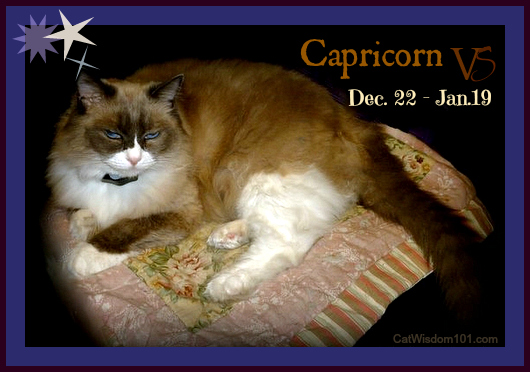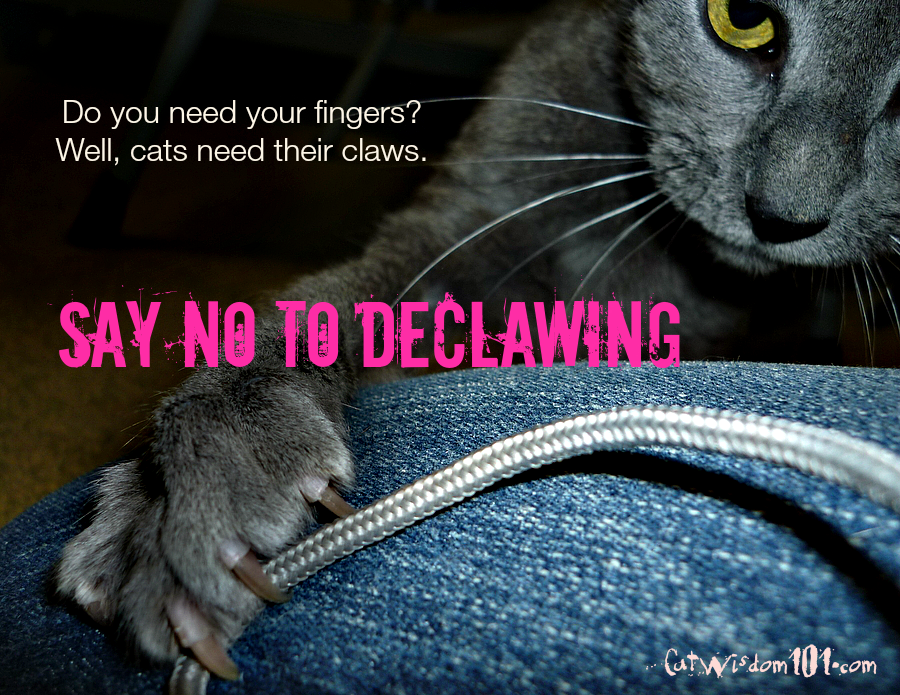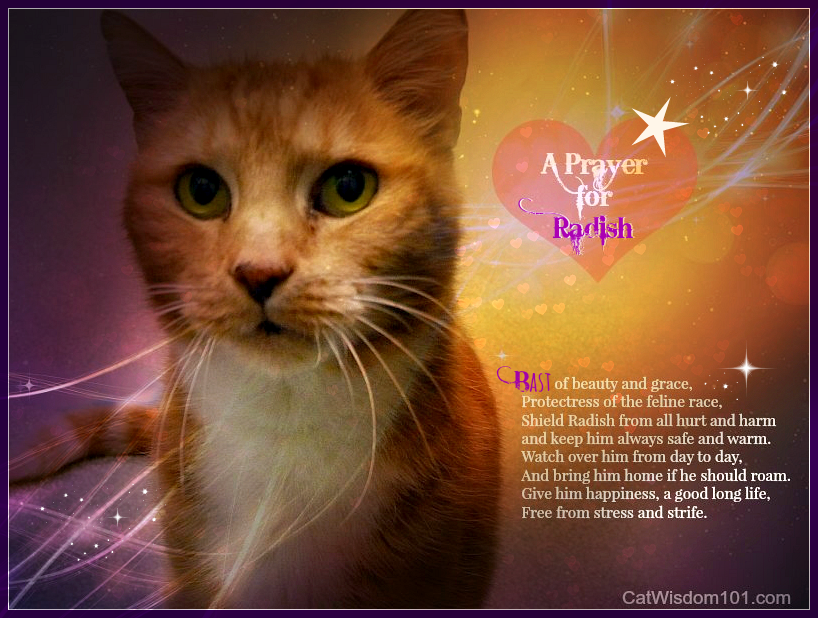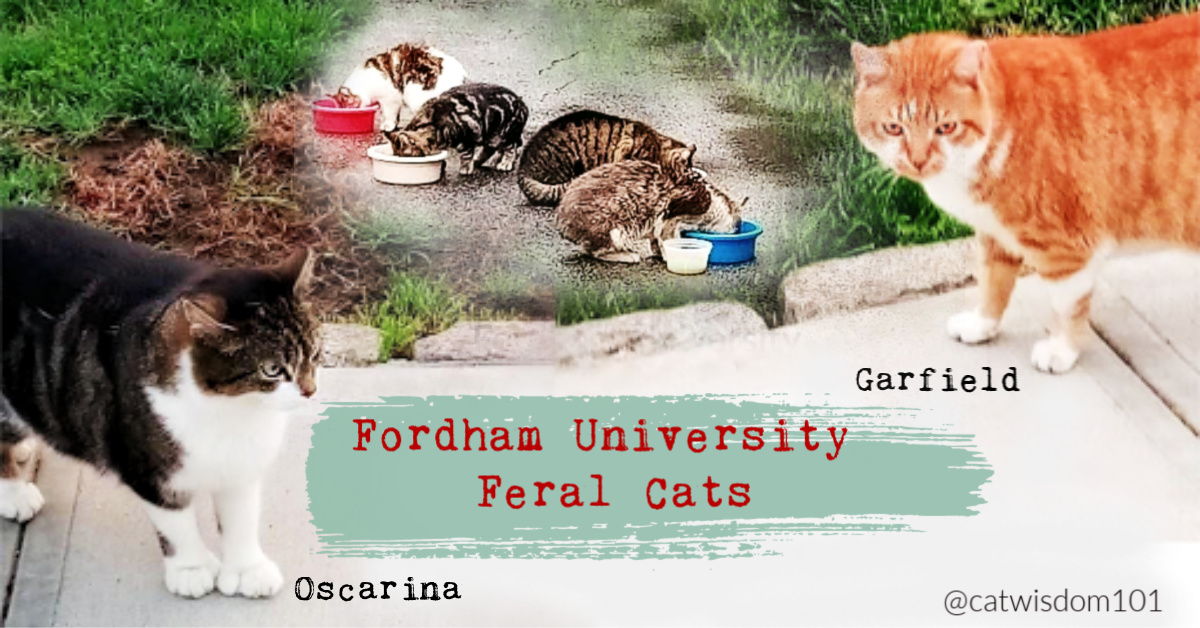Vet 101: Subclinical Infections
 Dr. Letrisa Miller answers a reader’s two part question for this week’s Vet 101 Q & A on respiratory and dental infections.
Dr. Letrisa Miller answers a reader’s two part question for this week’s Vet 101 Q & A on respiratory and dental infections.
Question: I am in a quandry about what path is best for my at least 16-year-old cat. For a year or so she has had the symptoms of occasional sneezing, snorting, gagging, wet nose-spewing clear mucous everywhere. These symptoms get better for a day or two, but rev up again. Today I noticed a small amount of clear discharge from corner of the eyes that is new. I adore the sweet thing. I allow her to sleep underneath the covers with me. She lies in the crook of my arm like a teddy bear. So, the spewing is not pleasant for me (or for her, I should imagine) A veterinarian told me these are symptoms of chronic, incurable viral respiratory infection. However, Riba (the kitty) did develop a secondary bacterial infection with greenish-black specks in mucous. Past attempts to administer antibiotics failed, so the vet gave her an injection of Convenia. MIRACLE! Not only did the infection disappear, all of the other respiratory symptoms vanished-instantly-no joke, within an hour she was absolutely asymptomatic-and has remained so for 2 months. Now the above symptoms are slowly returning. Is it alright to give another Convenia, maybe every few months? I have read about it and the potential side effects are alarming. She had NO adverse reaction to it, thank God. But, would she be more likely to have reaction with subsequent Convenia injections? Are there any other long acting antibiotics for cats?
The vet opened her mouth and I saw a large ulcer in the corner of her mouth-pink in the center, ragged whitish edges, no exudate. Her gums were not discolored, and appeared clear. Vet said she needs teeth cleaned. This seems a brutal and cruel thing to do to this cat, as she may have FCV or at least has one or more of those ulcers. Would it not be even more painful, and make healing from extractions more complicated? If she is in pain with her mouth I want to alleviate that, if possible. But not at the risk of her not healing up and being in more pain, perhaps permanently. I would just like to see if you have any insights into these problems from your viewpoint. All of her lab work was normal. Her appetite has diminished slightly. Thank you, M.
Answer: I am so glad that your cat is feeling better. It sounds like she might have had a subclinical respiratory and/or dental infection for a long time. I have treated many cats that came to me with long-term subclinical infections in the upper or lower respiratory tracts or, even more commonly, in the mouth.
When discharge from the nose is clear and watery, the cause is often a viral infection. Inflammation caused by the infection in turn causes overproduction of tears or watery secretions. Sometimes, though, allergy, bacterial infection, or pain is an underlying cause.
The only cure for this situation is to extract the affected teeth and treat with antibiotics. Treating with antibiotics alone can temporarily “cure” symptoms, but until the underlying problem is dealt with, the infection will always come back. Even worse, if treatment continues and the underlying problem is not addressed, the infection is likely to become resistant to antibiotics. Helping the cat at that point is incredibly difficult.
I am often amazed at the incredible changes I see after doing dentistry work on elderly cats. They seem years younger within days. They can sleep soundly and not spend all of their energy dealing with pain and fighting infection.
I firmly believe that dentistry in older patients extends their lives as well as markedly improving their quality of life. Depending on the situation, dentistry can also end the need for long-term antibiotic administration that may be harmful and lead to serious antibiotic resistance.Another consideration is the role of dental infection in kidney disease. Periodontal (i.e., dental) disease is often associated with loss of kidney function and is thought to be one of the important causes of chronic kidney disease in cats. Treating dental infection—or better yet, preventing it through routine dental care—is thus a key step in avoiding kidney disease.
Perhaps surprisingly, most cats have feline calicivirus (FCV) in their mouths. Many of the vaccines used to prevent upper respiratory viral infections are live virus vaccines that contain calicivirus. The strain of virus used in the vaccine does not cause disease, but it can stay in the cat’s system and will then be detected in any test for calicivirus. The test can’t tell the difference between the vaccine virus and the disease-causing virus.
The presence of calicivirus does not mean that it is the cause of any disease. Cats with a condition called gingivostomatitis that also have the virus might have inflammation that is harder to control, but the presence of the virus does not mean that treatment will be ineffective.
Because Riba has an ulcer in her mouth, she could have an active calicivirus infection. However, such infections generally resolve within a week to 10 days. Unless Riba has a current, active infection, healing should not be affected by the presence of the virus.
Vaccination usually prevents infection, however, and ulcers can just as easily be caused by bacterial infection in the mouth, particularly tooth root abscesses. So, if Riba is current on her vaccinations, she may not have active caliciviral infection.
The remarkable response Riba had to antibiotic therapy indicates that her problem is much more likely to be bacterial infection (antibiotics have no effect on viruses such as FCV). The response of the nasal and eye symptoms to the antibiotic also supports dental infection as the cause.
Convenia (cefovecin sodium), the cephalosporin-class antibiotic given to Riba, is a long-acting injectable antibiotic approved for use in cats and dogs and introduced in the United States in 2008. The antibiotic controls infection for a maximum of two weeks, but it stays in the system for well over a month. Once you put the drug in, you have no way to get it out. I view it as a drug of last resort. Anecdotally, it has been shown to have considerable risk. I have heard numerous reports from colleagues about cases of immune-mediated hemolytic anemia resulting in the death of cats that had been given Convenia. The connection cannot be confirmed because the drug was given to cats that were sick. This makes cause and effect difficult to prove.
I personally have treated two cats that subsequently died from complications that were consistent with known adverse responses to cephalosporin antibiotics, and other practitioners I know have seen similar adverse events. I have also seen several cases in which cats that received multiple injections of the drug later developed severe antibiotic-resistant infections (one of these was a methicillin-resistant Staphylococcus).
When bacteria are exposed to an antibiotic that is effective for only a short period but is present at low levels for a long time, the bacteria have a chance to develop resistance. During the time when not enough antibiotic is present to kill, the bacteria that are not affected by the antibiotic are able to outgrow the bacteria that are affected. The resistant population eventually takes over, and a resistant infection results.
Because of the risks of adverse reactions and resistance, I use this antibiotic only as a last resort. And I let clients know that using the drug has serious risks. Any drug can cause adverse reactions, and if the drug stays in the patient for an extended period of time, the risk of death increases substantially. Whether repeated doses increases the risk of adverse events is uncertain.
In Riba’s case, Convenia might have been the best option, but I hope you were advised of the risks and benefits beforehand so that you could make an informed decision. It sounds as if your veterinarian does not reach for Convenia as a first line antibiotic and I, for one, appreciate that. Cats can be difficult to convince that oral medications are the best option for them and I sometimes even have to send home daily injections for those that absolutely refuse to take oral medications or that have drug resistant infections.
I firmly believe that when you are deciding whether to have a surgical procedure such as dentistry (this applies to decisions about your healthcare as much as it does to that of your cats), the most important consideration is the risk vs. benefit equation. What are the risks and what are the benefits?
From your description, it sounds like Riba is in good general health with no kidney disease or heart disease, so anesthesia should be relatively safe.
Ah, but what about dental disease? Didn’t I say earlier that it is associated with loss of kidney function? If the dental disease is well advanced, a presurgical check of kidney function is warranted, but hopefully most people will consider treating dental disease long before it reaches an advanced stage. (If kidney function is found to be impaired, the risk of anesthesia may still be outweighed by the benefits and making sure that the patient is well hydrated before surgery and choosing drugs that don’t have to be metabolized by the kidneys minimizes the risks.)
For cats that will have extractions, I use a sustained-release pain medication that controls pain for three days. That way no medication needs to be given by mouth after a dental extraction—unless the cat needs antibiotics, in which case I sometimes prescribe powdered antibiotics that can be mixed into canned food.
If Riba is in reasonably good health with no heart disease or major organ dysfunction, she would probably benefit greatly from having the dentistry done. I encourage you to talk again with your veterinarian and work out the risk-benefit equation that is specific to Riba. With proper anesthesia, fluid support during the procedure, and pre- and postoperative pain control, she should feel much better afterward.
Letrisa Miller, MS, DVM





26 Comments
sims 4 pets activation key
Thank You for this.
nike bag qatar
Hi my friend! I wish to say that this post is awesome, nice written and include almost all important infos. I would like to see more posts like this.
jersey shore medical center avis pa
Itreally a nice and helpful piece of information. I am happy that you just shared this helpful info with us. Please keep us informed like this. Thank you for sharing.
new jersey knights aau basketball
WhatHappening i’m new to this, I stumbled upon this I have found It absolutely useful and it has aided me out loads. I hope to contribute & help other users like its aided me. Great job.
adobe zii windows Mac OS
very interesting post, i actually enjoyed this web site, carry on it
naruto blazing summoning hack
I conceive this web site holds some real superb information for everyone : D.
Christine
I’m having a similar issue with my 10 y.o. He’s had a URI for about 5 weeks now. He also has the very earliest signs of kidney disease in his bloodwork. He was given Convenia. Within a few days one kidney was enlarged and hard. The URI didn’t improve much if at all. 2 weeks after convenia his kidney went back to normal size. He started doxicycline for the URI. Again not much if any improvement with the URI. And both kidneys became enlarged and hard, one larger than the other. The antibiotics were stopped. The vet has no answers for me, other than we know he needs a tooth pulled. Possibly that’s the cause of the URI. Cat is now on azithromycin and no URI improvement. Kidneys are hard and enlarged. I don’t know what to do.
Robert J Russell
I have searched & can’t find a thing concerning others experiencing what occurred with 2 of my cats & dental work causing other diseases. One was just a cleaning, all blood work/tests done before work were normal, healthy. Within a month she had hyperthyroidism & dead in a year at 9 yrs old. Second cat, 13 yrs old, had 2 abcessed teeth that vet said had to be pulled. Again all pre surgery tests were great. Within 2 weeks, she was in kidney failure & dead in less than a month. What gives? I’m now scared to death to allow any of my remaining 2 cats or future pets to have their teeth touched, for fear I may just have given them a death sentence. The other 3 that never had dental work lived to ripe old ages of 19, 17 & 16. I’m now on a campaign to brush my remaining beloveds teeth with an oral gel that breaks up plaque even more often than I already do. Is there something dangerous about dental & cats/dogs that is being withheld for the sake of making money & if your pet lives, consider yourself very lucky? Scared & Suspicious.
Layla Morgan Wilde
This is unusual, and I’m sorry for your loss. Preventative dental is a wise and perhaps a consult with another vet of dental specialist.
Donn Mussmann
Viruses are capsules with genetic material inside. They are very tiny, much smaller than bacteria. Viruses cause familiar infectious diseases such as the common cold, flu and warts. They also cause severe illnesses such as HIV/AIDS, smallpox and hemorrhagic fevers.;^*..
Till next time <http://www.picturesofherpes.co/
Maxwell, Faraday & Allie
This is really really interesting to our Mom because she’s been researching her two blog posts for February’s Pet Dental Health month. It’s SO great to hear a veterinarian say what she did about fixing dental issues – that they can give an older pet an entirely new lease on life. One of her top faves from your blog – THANKS!
Oui Oui
Recently Mica Moo had a tooth extracted and a long acting antibiotic shot. I don’t remember the name of it, but being formerly feral, she is so skittish I decided it was easier on her not to pill a couple times a day. I can get a pill down an animal in a couple seconds, but she is traumatized by the experience. I’ve worked for years to build her trust (which is still shaky) and hated to set it back. All worked out well.
Christine
Very enlightening article I learned so much and will save this as reference. Thank you Layla and Dr. Miller!
free minecraft account creator
rt7iemh, 3082 [link=http://bestfacebookhack.com/]facebook hack app iphone[/link] facebook hack best yp965fxq, 6327 [link=http://getminecraftaccountfree.com/]free minecraft account for mac[/link] 2237 [link=http://canada-paydayloans.ca/]payday loan yes login[/link].
Penelope
Wonderful! I learned a lot! I really like learning things that can affect my fur babies!
Kisses
Nellie
nancy
Very informative! Thanks for posting, Layla!
nancy
Skeeter and Izzy
Wow Doc that was a fabulous post! Lots of GREAT info! Thank you so much for taking the time to post on Layla’s site.
Luv Skeeter and Izzy >^..^<
Abby
Excellent information and we always look forward to these articles.
Connie Marie
I really enjoyed this informative article and learned slot.
I like the way Dr Miller writes.
Deb n Cats
My big girl developed an abscess on her chin as a result of a bite from her sister. Knowing that the ability to pill this cat was zero, I opted for an injectable antibiotic. I do not remember the name of it. At the time, my vet spent a good 20 minutes with me discussing all of the options, including ways to facilitate giving her a twice a day pill. Even in the office, it was clear she would only tolerate the restraints needed to give her the pill once or twice and then she’d hide.
She’s fine, but she’s also young and health, which will help tremendously in her ability to fight off anything else that comes her way. I don’t know that I would have given the injection to an elderly cat. I’d worry too much about recurring infections becoming untreatable.
As long as vets help us weigh the options, a injection can be a good choice.
boomermuse
Yes, weighing all options and risks is key.
catherine turley
so the risks associated with using convenia are the same as with keflex?
Bernadette
There is so much information here! One of my cats years ago developed a persistent sinus infection that lasted her final three years, and we traced it back to an infected tooth that eventually fell out–back in the days before dental care was a regular thing. She also developed a bony tumor on her jaw that eventually took her life, likely related to the condition of her teeth. She was a deaf long-haired cat, difficult to handle, and yarked up a new hairball each day, no doubt that lifelong vomiting had a huge impact on the health of her mouth and condition of her teeth.
Kathryn
I just learned a lot. Thank you very much.
My SIL’s, 12-year-old cat just passed this week from anemia/kidney issues. It was fairly quick – a few weeks – from diagnosis. He had had seizures for the last few years and had been on phenobarbital for the seizures. Not sure if there were any dental issues.
Learned a lot. Going to bookmark this post in my files for future reference, for my two, nearly 11-year-old boys.
Thank you.
boomermuse
K, sorry to hear about the passing of your SIL’s cat.
Katie and Coccolino the mini pig
Always interesting information. We have to bring our cat to take care of his tooth that is causing him pain. An expensive procedure of about $700 but what is the alternative if he is in constant pain as the vet said? Thanks for sharing!
Oink oink,
Katie and Coccolino the mini pig